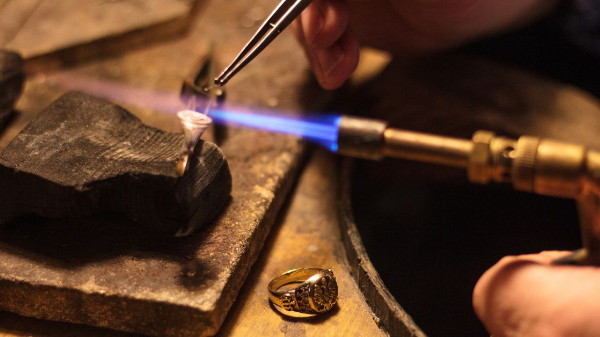Gold, one of the most precious metals in human history, holds significant cultural, economic, and aesthetic value. Gold jewelry, in particular, has held a prominent place in people’s lives for centuries, carrying diverse meanings across different cultures. The countries distinguished in gold jewelry production not only excel in their products but also boast rich histories and advanced craftsmanship.
In this article, we will closely examine the intricacies and histories of the leading countries in gold jewelry production. Here are the captivating stories and contemporary influences of the countries shining brightly in the gold jewelry industry.
- India:
- Historical Significance: India has a rich cultural heritage deeply intertwined with gold jewelry production, dating back thousands of years. Gold holds immense cultural and religious significance in Indian society, often symbolizing wealth, prosperity, and auspiciousness.
- Craftsmanship: Indian jewelry is renowned for its intricate designs, often featuring detailed filigree work, enameling, and intricate gemstone settings. Traditional techniques such as Kundan, Meenakari, and Jadau are still practiced alongside modern innovations.
- Market Influence: India remains one of the largest consumers and producers of gold jewelry globally, with bustling markets in cities like Jaipur, Mumbai, and Kolkata. The country’s diverse designs cater to both domestic and international markets.
- Italy:
- Historical Significance: Italy has a long-standing tradition of fine jewelry craftsmanship, dating back to the Roman Empire. Italian artisans are renowned for their expertise in goldsmithing, with centuries-old techniques passed down through generations.
- Craftsmanship: Italian jewelry is synonymous with luxury, sophistication, and innovation. Renowned for their exquisite designs and meticulous attention to detail, Italian brands like Bulgari, Buccellati, and Damiani set global standards in the industry.
- Market Influence: Italy remains a leading exporter of high-end jewelry, with iconic designs sought after by discerning consumers worldwide. Cities like Florence, Milan, and Vicenza serve as hubs for both traditional craftsmanship and cutting-edge design.
- Turkey:
- Historical Significance: Turkey’s gold jewelry tradition spans centuries, influenced by its rich cultural heritage, including the Byzantine and Ottoman Empires. Turkish jewelry often reflects a fusion of Eastern and Western styles, incorporating intricate motifs and symbolism.
- Craftsmanship: Turkish artisans are known for their skillful use of techniques such as filigree, granulation, and cloisonné enameling. Jewelry designs often feature ornate patterns inspired by nature, architecture, and Islamic art.
- Market Influence: Turkey is a significant player in the global gold jewelry market, with Istanbul being a major center for production, trade, and export. Turkish jewelry enjoys popularity both domestically and internationally, with a diverse range of styles catering to various tastes.
- China:
- Historical Significance: China has a rich history of gold jewelry production dating back thousands of years, with gold symbolizing wealth, prosperity, and good fortune in Chinese culture. Traditional Chinese jewelry often incorporates symbolism and auspicious motifs.
- Craftsmanship: Chinese artisans excel in techniques such as filigree, repoussé, and jade carving, creating intricate and meaningful designs. Modern Chinese jewelry combines traditional craftsmanship with contemporary aesthetics to appeal to domestic and global markets.
- Market Influence: China’s growing economy and burgeoning middle class have fueled demand for gold jewelry, making it one of the world’s largest consumers. Cities like Hong Kong, Shanghai, and Shenzhen are hubs for jewelry production, trade fairs, and retail.
- United Arab Emirates (UAE):
- Historical Significance: The UAE has a longstanding tradition of gold craftsmanship, with gold playing a significant role in Emirati culture and traditions. Gold souks have been trading hubs for centuries, attracting merchants and buyers from around the world.
- Craftsmanship: Emirati jewelry often features bold designs, incorporating motifs inspired by Islamic art, geometric patterns, and traditional Emirati symbols. Skilled artisans combine traditional techniques with modern innovations to create distinctive pieces.
- Market Influence: The UAE, particularly Dubai, has emerged as a global hub for gold trade, with its tax-free policies, strategic location, and vibrant tourism industry attracting buyers and sellers alike. The Dubai Gold Souk is renowned for its extensive selection of gold jewelry, catering to diverse tastes and budgets.



